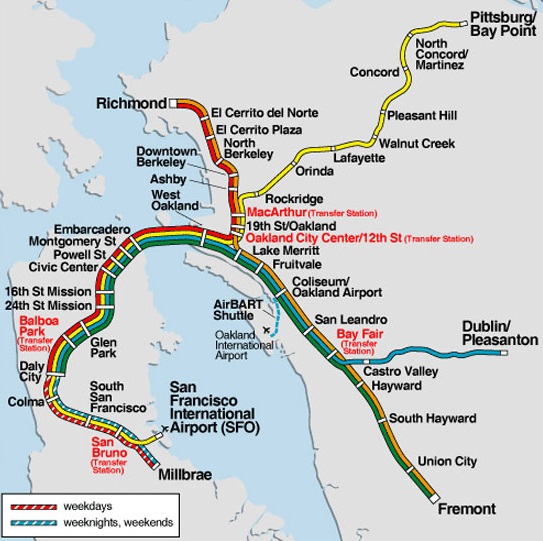Algorithm
- create the two-nearest-neighbors graph $N_2$ using the first data set. That is, let each station be connected to the two closest stations.
- for a path in the second data set, assume that the train must have been traveling along a geodesic (shortest path between two vertices) on $N_2$, and fill in the missing stations accordingly.
Example: BART

If ourOn input the partial path is (MacArthur, Lafayette) then we will fill it in as (MacArthur, Rockridge, Orinda(MacArthur, Lafayette), Lafayette)the Algorithm outputs
(MacArthur, Rockridge, Orinda, Lafayette),
which is correct. There is an, even though $N_2$ has a spurious edge between Rockridge and Ashby, but that's okay.
